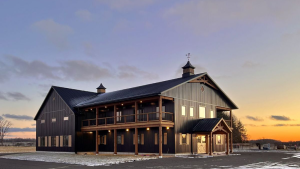Owners of buildings who discover defects that pose a substantial danger must be encouraged to effect repairs before someone is injured. The cost of the repairs necessary to remedy the defect(s) is to be borne by the party or parties whose negligence caused the dangerous defect and the liability for those costs is to be imposed during the life of the building.
General contractor held liable for negligence to subsequent owner of building not in contractual privity with contractor: owner’s action not time-barred
by Paul Sandori
Winnipeg Condominium Corp. No. 36 v.
Bird Construction Co. Ltd.
Subsequent owner of apartment building not in contractual privity with general contractor sues contractor after large section of cladding falls from building ? owner claims builder owes duty to all subsequent owners to construct building to such standards as would prevent property damage resulting from negligence ? general contractor files motion to dismiss owner’s claim as disclosing no reasonable cause of action ? motions judge rules full trial required ? on appeal by contractor Court of Appeal rules owner?s economic losses not recoverable ? on further appeal by owner Supreme Court of Canada reverses decision and holds economic losses recoverable from contractor and orders trial with respect to remaining issues in statement of claim ? on further motion by contractor to dismiss statement of claim on ground that action is time-barred dismissed
In 1989, a large section of cladding fell from the ninth storey of an apartment building in Winnipeg and crashed onto the ground below. Luckily, this happened in the middle of the night and nobody was hurt, but the entire cladding had to be replaced at a cost of more than $1.5 million.
The owner of the building, Winnipeg Condominium Corporation (?WCC?), sued the general contractor, the cladding subcontractor and the architect for negligence. None of the parties sued had a contract with WCC.
The general contractor was Bird Construction Co. Ltd. It had constructed the apartment building in 1972 for a developer. In 1974, the building was sold. In 1978, it was converted into condominiums and the units sold to individual purchasers. The WCC was formed.
In 1982, the cladding was inspected by a firm of engineers, Crozier Kilgour, and the original architect, Smith Carter. They recommended minor repairs, which were completed at a cost of just over $8,000.
In its statement of claim, WCC alleged that the designers and builders owed a duty to all subsequent owners and occupiers to construct the building to such standards of excellence and safety as would prevent personal injury and property damage resulting from their negligence.
Bird responded by filing a motion to have WCC’s claim dismissed as disclosing no reasonable cause of action. Justice Galanchuk decided that the issue required a full trial. Bird appealed.
The Manitoba Court of Appeal unanimously sided with Bird on the basis that the economic losses were not recoverable. WCC appealed to the Supreme Court of Canada. In 1995, the Supreme Court allowed the appeal.
Justice La Forest, speaking for the Court, said that, with respect to dangerous defects in buildings (as opposed to merely shoddy construction), there are compelling policy reasons that would make contractors liable in negligence for the cost of repairing such defects. Therefore, WCC?s claim could go back to the Queen?s Bench for trial.
As a result, more than 25 years after completing the building, Bird Construction is still in the courts and still only at square one.
Eventually, the trial judge will have to decide whether the work on the building was negligently performed, whether Bird was negligent in the hiring of suitable subcontractors, and whether the hidden danger was substantial and foreseeable. The following is a summary of a motion by Bird to have WCC?s claim dismissed on the ground that the action was barred by virtue of Manitoba?s Limitation of Actions Act, R.S.M. 1987, c. L150.
The Act provides that an action must be commenced within six years after the cause of action arose. However, the injured party may apply to the courts to be allowed to continue. The court may allow the action to proceed if it is satisfied on evidence that not more than 12 months have elapsed between the date of the application and the date on which the applicant knew or ought to have known “all of the material facts of a decisive character upon which the action is based.”
Bird argued that the cause of action arose in 1974 at the latest, when the alleged negligent construction took place. The collapse of the cladding happened much later than six years after that. Therefore, WCC should have applied for leave to commence its action within 12 months of the date when the cladding collapsed. This was not done, concluded Bird, so the claim should be barred.
WCC, however, took the position that the cause of action arose in 1989, when the cladding collapsed; therefore, no application was required. This position was based on the so-called “discoverability rule” of common law, rather than on statute law: the cause of action arises when the damage is discovered or, with due diligence, ought to have been discovered.
Chief Justice Oliphant the Manitoba?s Queen?s Bench cited the 1997 decision of the Supreme Court of Canada in Peixeiro v. Haberman. In that decision, Justice Major adopted the following statement of the law:
When time runs from “the accrual of the cause of action” or from some other event which can be construed as occurring only when the injured party has knowledge of the injury sustained, the judge-made discoverability rule applies. But, when time runs from an event which clearly occurs without regard to the injured party’s knowledge, the judge-made discoverability rule may not extend the period the legislature has prescribed.
Justice Oliphant decided that the time under the Limitation of Actions Act could not have started to run from the date of the alleged negligence by Bird. The starting date must be the date when the damage was discovered in 1989, and WCC had six years after that to start its action, which it did.
The judge concluded:
The social policy that emerges from the decision of the Supreme Court of Canada in Winnipeg Condominium Corporation ? is the prevention of accidents. Owners of buildings who discover defects that pose a substantial danger must be encouraged to effect repairs before someone is injured. The cost of the repairs necessary to remedy the defect(s) is to be borne by the party or parties whose negligence caused the dangerous defect and the liability for those costs is to be imposed during the life of the building.
Court of Queen?s Bench of Manitoba
Oliphant, A.C.J.Q.B.
September 10, 1998










Recent Comments
comments for this post are closed